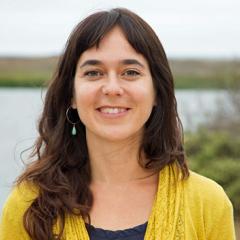Cushing quoted in Grist on why resistance to California's air pollution law is a sign of progress
For decades, California Assemblywoman Cristina Garcia has been trying to clean up the air in polluted neighborhoods — first as an activist, then as a legislator. Recently, she celebrated her most significant victory: Governor Jerry Brown needed her help to extend California’s cap-and-trade program. In return for her support, she got the legislature to pay attention to not just greenhouse gases, but all the accompanying nasty that pours out of smokestacks. The result: California’s most significant air-pollution law in years.
On Wednesday, Brown signed that bill, AB 617, on the blacktop of the Neighborhood Youth Center in Bell Gardens, California — Garcia’s home district in southeast Los Angeles. On the other side of a peach-colored, steel fence, a group of activists chanted protests. They were advocates for exactly the issues Garcia has championed. And they were heckling her.
Environmental justice groups have expressed outrage at the passage of California’s new cap-and-trade law, AB 398, which they say concedes too much to industry. A few even opposed Garcia’s air-pollution bill, claiming it isn’t strong enough to spur change.
...
“It’s laudable that lawmakers have recognized that low-income communities and communities of color are disproportionately burdened by pollution,” says Lara Cushing, a researcher at the University of California, Berkeley.
At the same time, Cushing explains, the cap-and-trade bill misses important opportunities: First, it prevents regulators from restricting the carbon emissions from any one plant. And it allows for industries to offset their emissions by, for example, planting trees hundreds of miles away. That doesn’t help people in the communities around industrial polluters, and there are real questions as to how well offsets work at all.
Cushing coauthored a recent assessment of California’s current cap-and-trade scheme, which found that the state’s highest emitters were polluting more after the system was put in place than before. Those facilities — which were overwhelmingly located in low-income communities and areas populated by people of color — sometimes paid for their emissions by buying offsets for projects beyond the state’s borders. (Grist board member Rachel Morello-Frosch was a coauthor on that report.)
